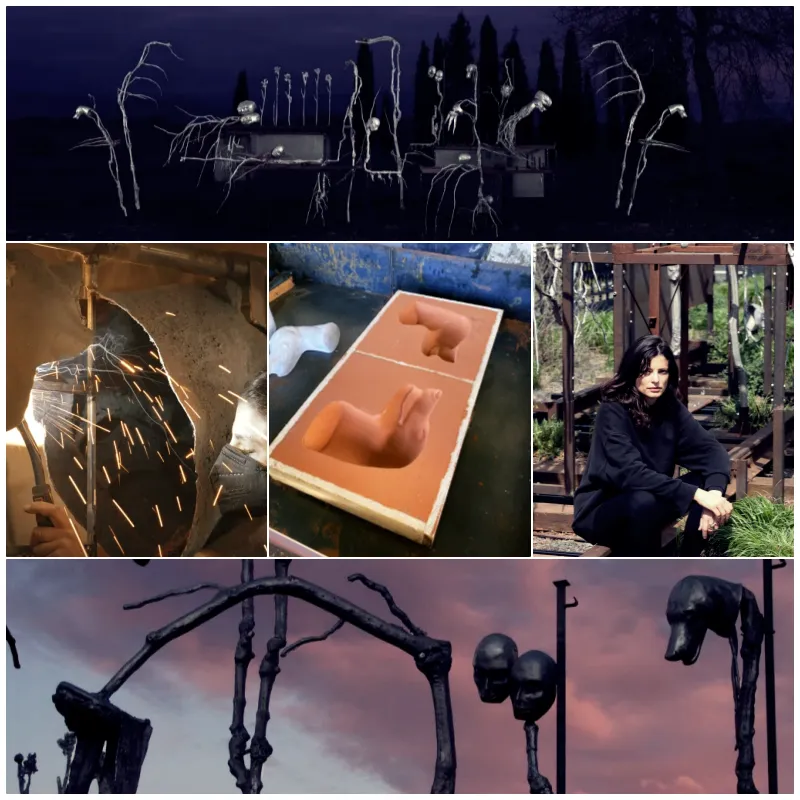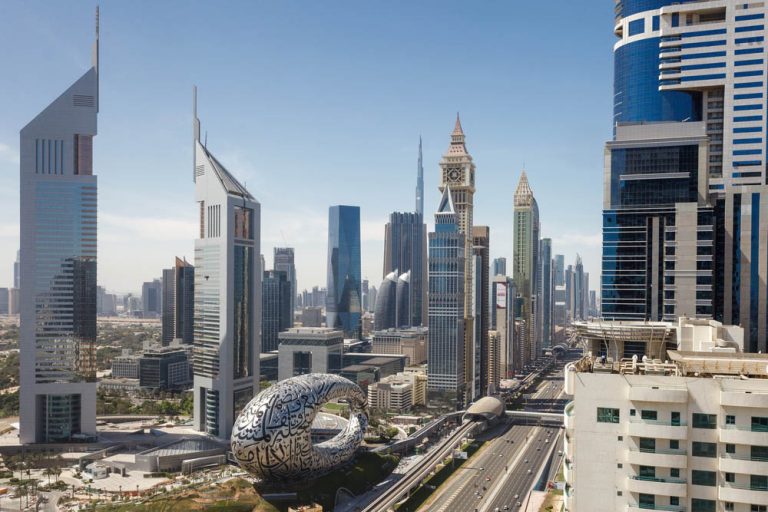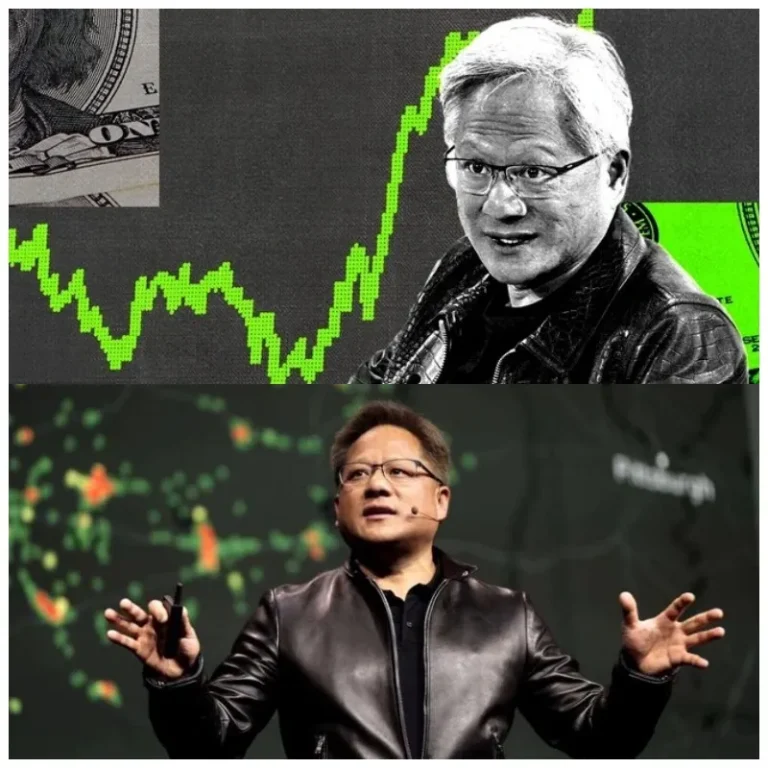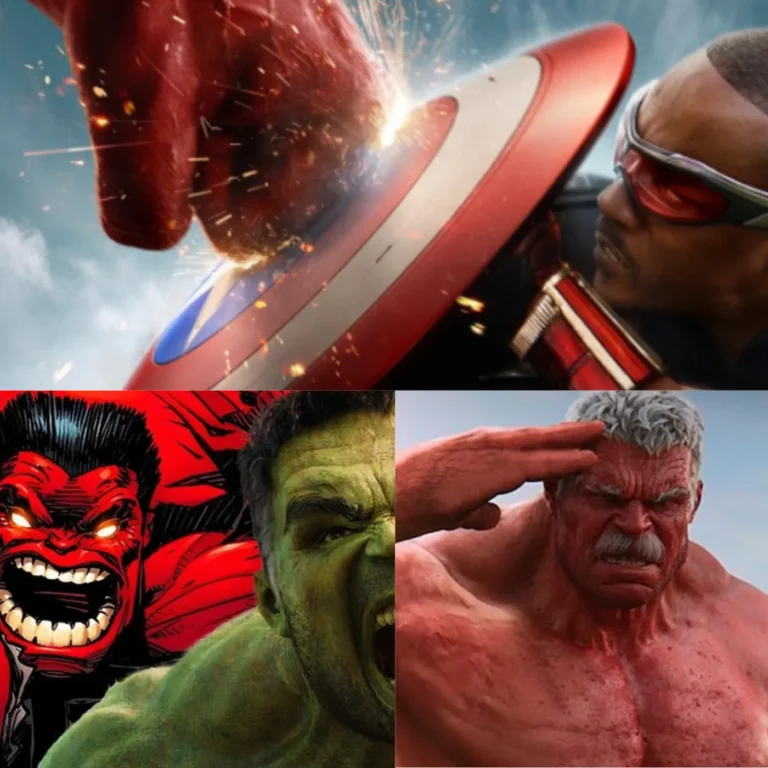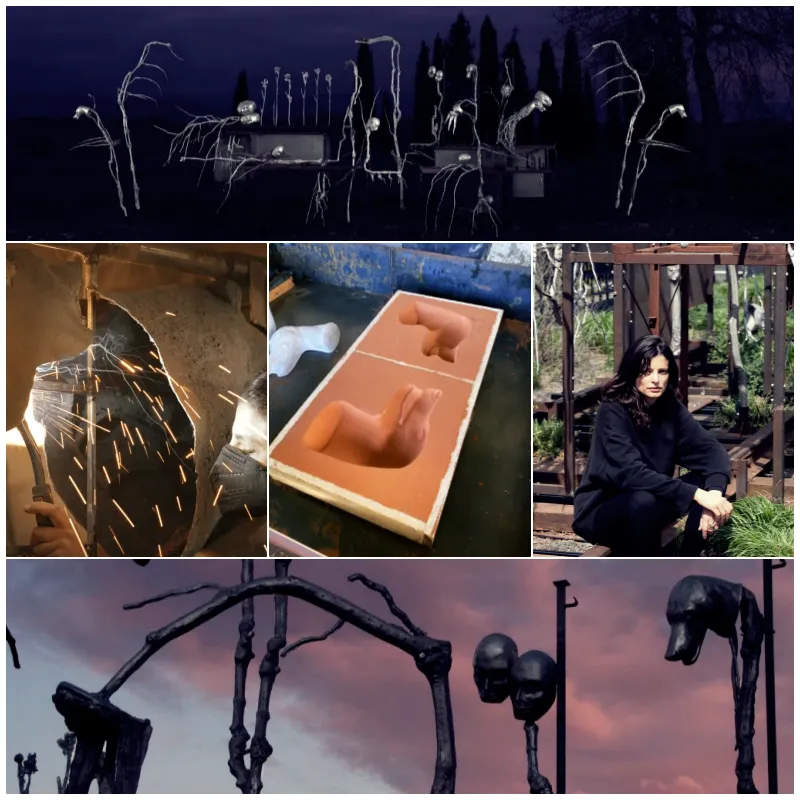
“Explore the fascinating intersection of nature and industry through the evocative sculptures of Italian artist Giulia Cenci. Her latest installation, secondary forest, currently gracing New York’s High Line, is a testament to her unique ability to blend organic and industrial elements into thought-provoking works of art”
Giulia Cenci, an innovative Italian artist, has captivated the art world with her ability to imagine and create new worlds. Her sculptures, which are a harmonious blend of industrial and organic materials, delve into the deep connections between all living things. Through her work, Cenci provocatively intertwines animal, human, and plant forms, challenging the boundaries of traditional art.
Born in 1988, Cenci divides her time between the Netherlands and her native Italy. However, it is her studio in the picturesque southern region of Tuscany that has become the heart of her creative endeavors. In this unique space—a former stable transformed into a multi-room studio—Cenci, along with her team of assistants, brings large-scale, evocative sculptures to life. These works often emerge from melted-down scrap metal, repurposed from old farm tools, car parts, and other discarded machinery. The resulting sculptures transport viewers to a fantastical realm, filled with references to wolves, dogs, human masks, and spindly plant tendrils.
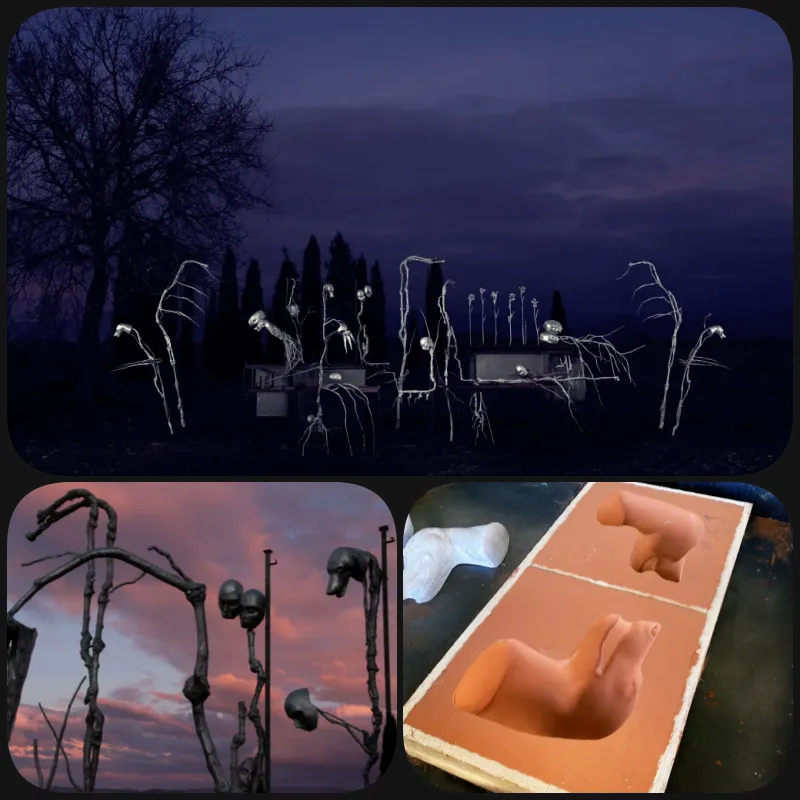
Cenci’s work has steadily gained recognition in the art world. In 2022, her installation dead dance was featured in “The Milk of Dreams” exhibition at the 59th Venice Biennale. This piece was so compelling that filmmaker Domenico Palma created a documentary to offer insights into Cenci’s creative process.
Currently, Cenci’s latest installation, secondary forest, is on display at New York’s High Line as part of a prestigious commission series running through March 2025. This piece intricately weaves botanical and woodland imagery with mammalian forms, all set along a steel grid that winds through the park. The installation not only references the history of the Meatpacking District and the High Line’s transformation from a rail line to a public park, but it also emphasizes the importance of site-specificity in Cenci’s artistic practice.
In a recent interview, Cenci discussed her studio in Tuscany, a space she has carefully adapted to suit her creative needs. The studio, originally designed as a stable, is divided into four “boxes,” each serving a distinct purpose. These spaces are connected by interior passages, allowing for practical workflow while maintaining a sense of mental separation for different stages of the creative process. Outside the studio, Cenci has established a small foundry where she and her team melt down car scraps to create sculptures, further blurring the lines between industry and nature.
Cenci’s artistic journey is deeply influenced by her surroundings. Over the years, she has lived in various places, each leaving a mark on her work. Her process is a discovery of new ways to coexist, breaking down traditional hierarchies and fostering connections between different species, entities, and genders. Her installations are not merely art pieces; they are ecosystems where diverse forms cohabitate and support each other, creating a dynamic interplay that is both visually striking and intellectually stimulating.
Cenci’s approach to each new project is grounded in the specific context of the site. For secondary forest, she drew inspiration from the natural growth overtaking the man-made infrastructure of the High Line. She envisioned a space where people, animals, plants, machines, and even invisible entities intersect, from the underground to the city skyline. Using old metal components from agricultural trucks, Cenci created a structure that allows the High Line’s natural elements to intertwine with aluminum figures representing plants, animals, and humans. The result is a surreal landscape where all forms are interconnected, redefining life in this urban setting.
Creating secondary forest was a labor-intensive process, taking approximately three months of planning and five months of production. This was Cenci’s first time working with aluminum, adding to the complexity and excitement of the project.
In her studio, Cenci finds inspiration from a variety of sources. She enjoys watching documentaries and interviews with other artists, often immersing herself in historical periods that differ vastly from today. Poetry also plays a crucial role in her creative process, helping her maintain an open and imaginative mindset.
When faced with challenges, Cenci’s problem isn’t a lack of ideas but rather a shortage of time, resources, and space to bring her visions to life. She is a relentless creator, constantly collecting items and ideas that could be transformed into art. Her studio is filled with materials waiting to be used, each piece holding the potential to spark a new project.
Cenci’s work is deeply rooted in her belief that all materials have value and potential. She often uses clay to model shapes, treating the process like a machine making a mannequin. This clash between her subjective experience and the concept of a stereotype is a recurring theme in her work. Drawing remains an essential part of her process, providing her with a sense of security and a continuous source of creative exploration.
Giulia Cenci’s art invites viewers into a world where the boundaries between the natural and industrial blur, offering a glimpse of a future where all forms of life are interconnected and essential to one another.
